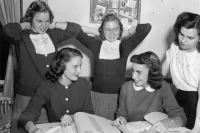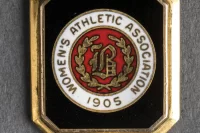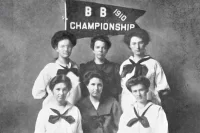
Here are a few items from the Muskie Archives and Special Collections Library and elsewhere on campus, and our thoughts about what they are and mean.
Sustained
The 540th birthday for Martin Luther, the German theologian and key figure in the Protestant Reformation, is coming up on Nov. 10.
The stained-glass depiction of Luther, showing him nailing the 95 theses to the church door, can be seen in Gomes Chapel with other great Western thinkers, from Homer to Marie Curie.
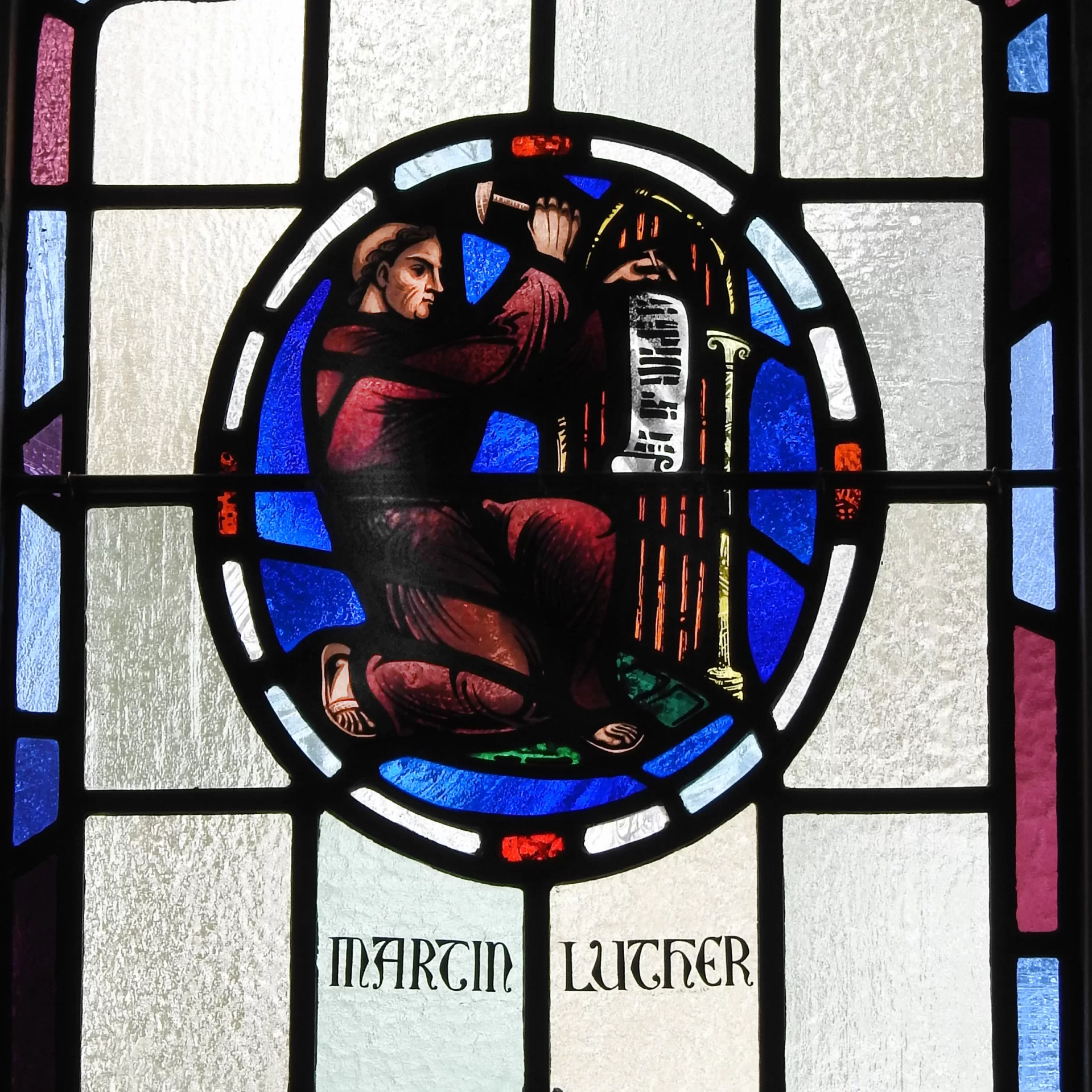
The specific window featuring Luther, along with Erasmus and Leonardo da Vinci, was dedicated on June 12, 1937, during class day exercises. The window was a gift of the Class of 1937, at the time the third in a series of four groups featuring ancient, medieval, renaissance, and modern figures.
The chapel’s stained glass imagery was designed by the famed Boston studio of Charles J. Connick, whose work in the Gothic Revival style is found worldwide.
Give a Ring
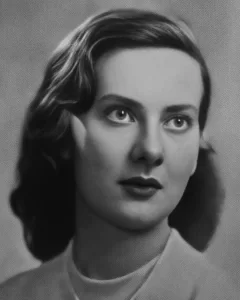
Held in the Muskie Archives and Special Collections, this silver Bates cigar-band ring belonged to the late Jane Libby ’56, a noted editor of archaeological publications.
She co-edited the scholarly book Pendejo Cave (2003) with legendary archeologist R.S. “Scotty” MacNeish, offering research suggesting a much earlier human inhabitation of North America than scholars previously thought.
When MacNeish died before the volume could be published, Libby handled the final editing.
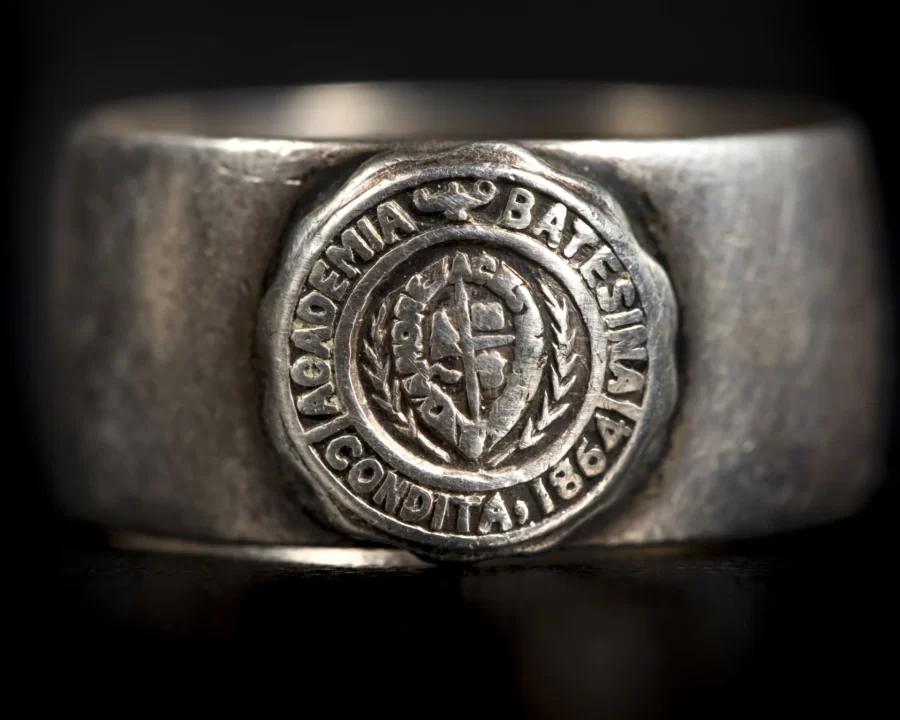
Bobcattin’
This photo by George Conklin ’53 shows a Texas-style derrick, near what is now Lane Hall. It gushed water high into air during the 1952 Mayoralty campaign.
Replete with skits, stunts, shenanigans and contraptions, Mayoralty thrived during the mid-1900s — an epic, three-day student campaign to elect a mock mayor of Bates.
In 1952, the Texas-themed campaign of “Smilin’ Jack” Davis ’54 defeated the Hollywood-inspired campaign of “Lymelight Lynn” Willsely ’54.
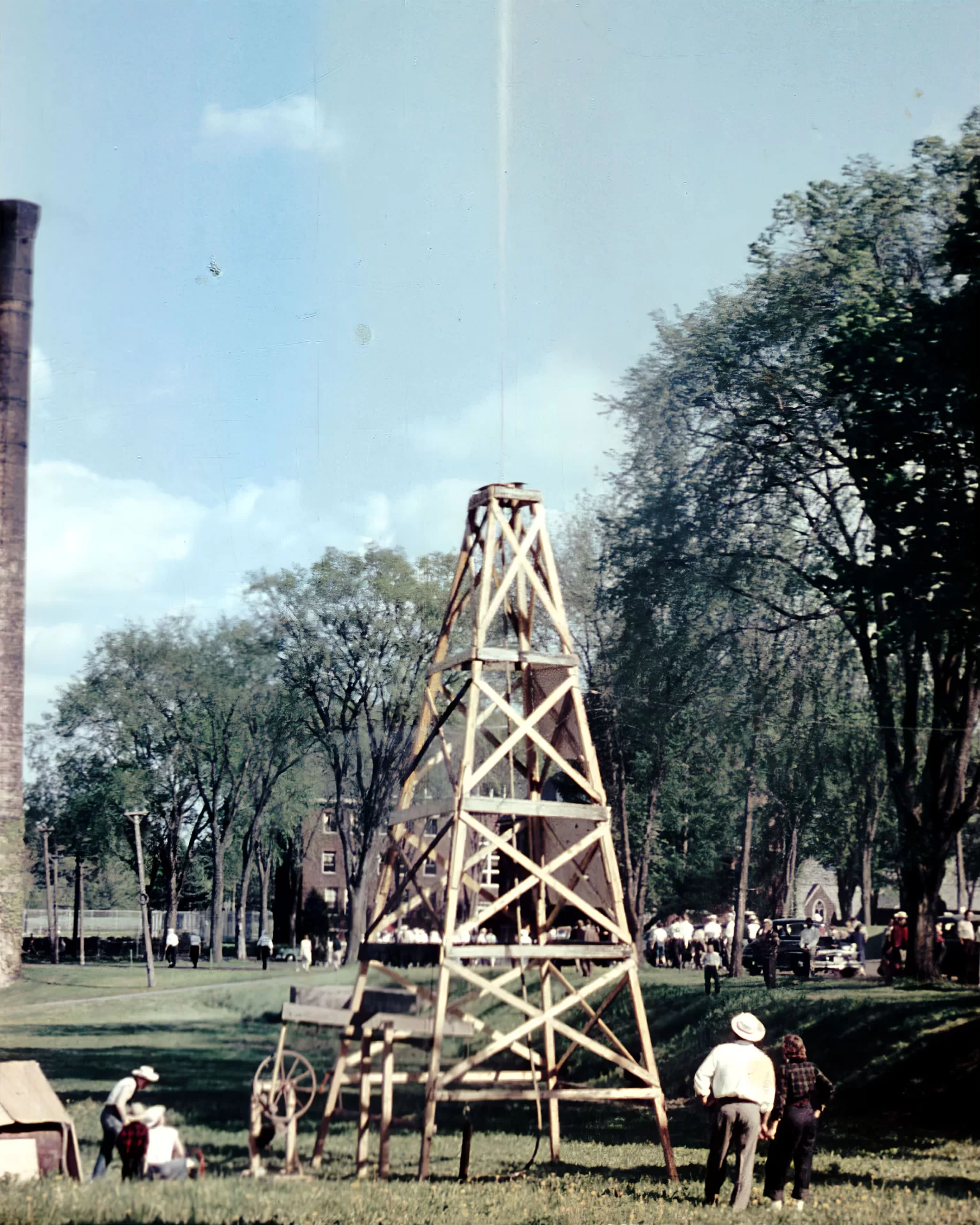
Fine Stein
Held in the Muskie Archives and Special Collections, this ceramic Bates stein belonged to the late Margie Gregory Wright ’45, who used her chemistry degree to land her first job, selling scientific equipment. She later taught science and health in Baltimore, and was a consultant to a family-life discussion group for the board of education.
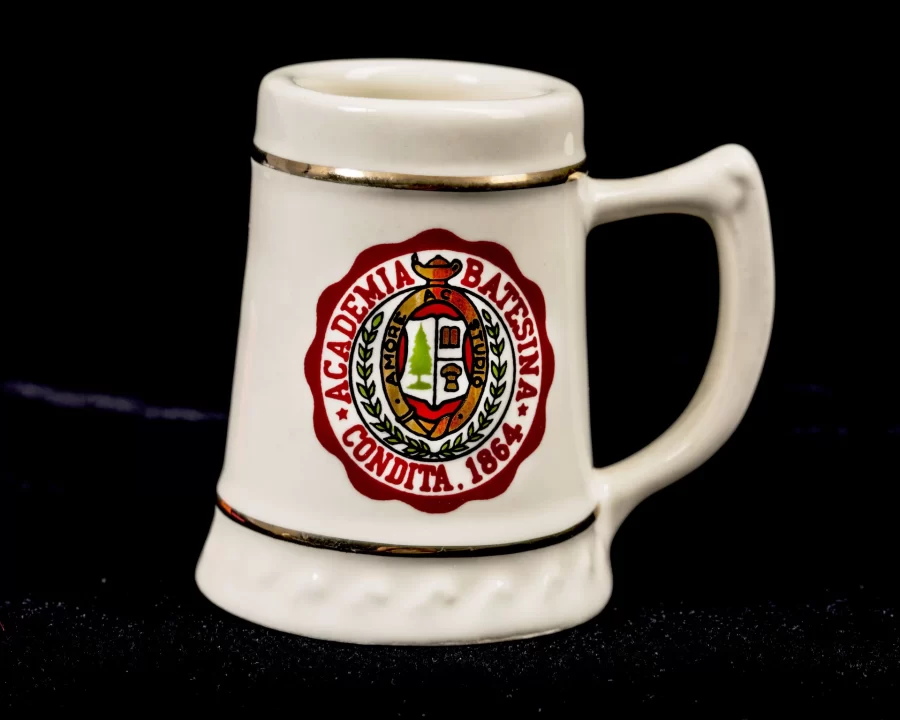
As with the ring photograph above, the era of this stein can be determined by the founding year on the seal: 1864, which is the year Bates became a college, rather than 1855, the year the Maine State Seminary was chartered.
Bates seals prior to around 1990 carried the 1864 date. Since then, it’s been 1855.
